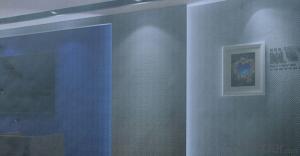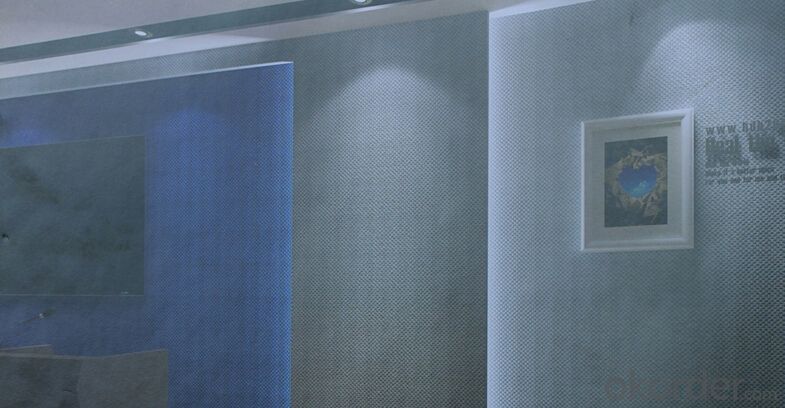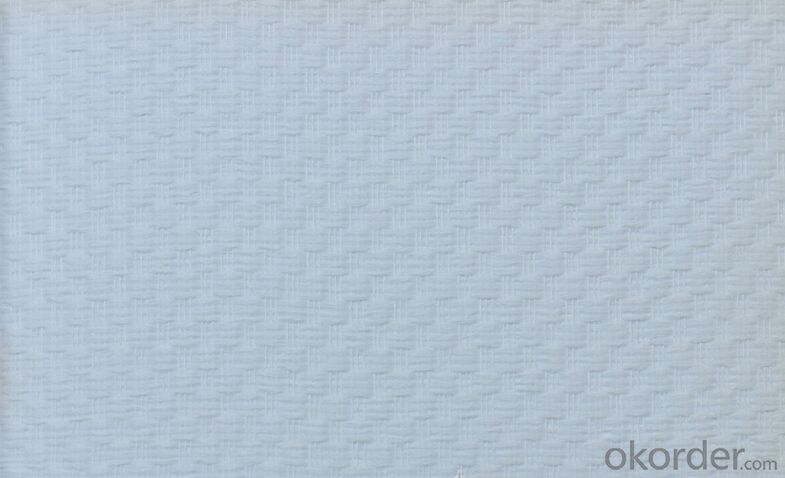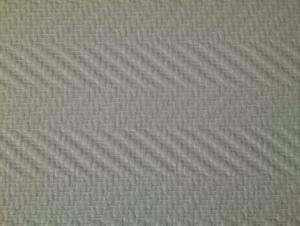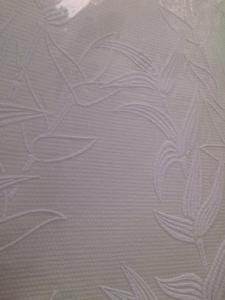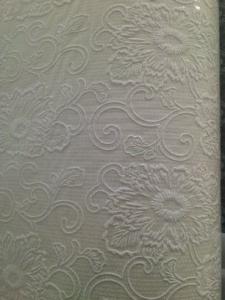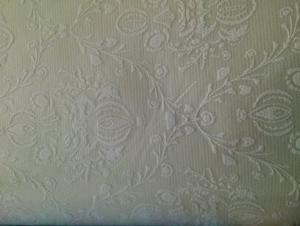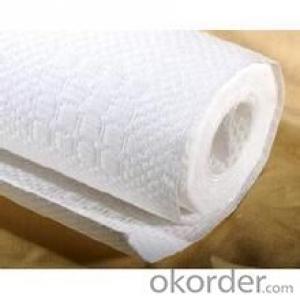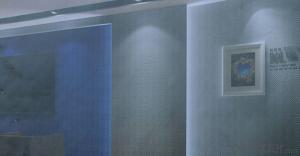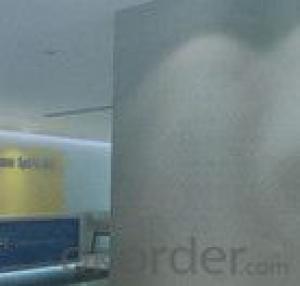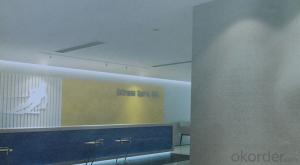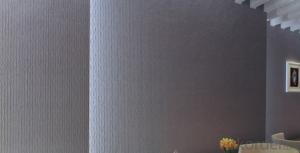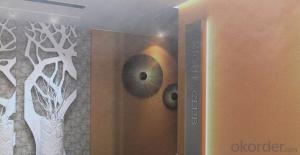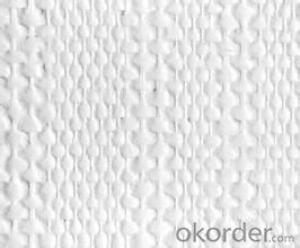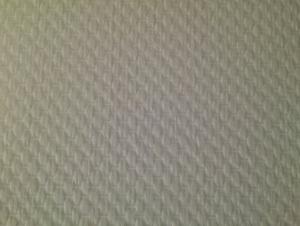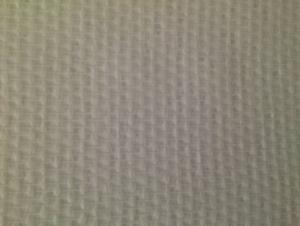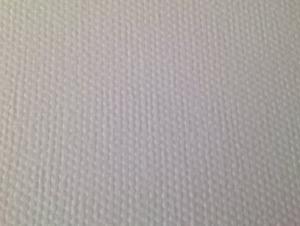Fiberglass Wallcovering Cloth with 81704 Air Permeability
- Loading Port:
- Shanghai
- Payment Terms:
- TT OR LC
- Min Order Qty:
- 100 m²
- Supply Capability:
- 100000 m²/month
OKorder Service Pledge
OKorder Financial Service
You Might Also Like
Fiberglass Wallcovering Cloth Air Permeability 81704
Specification of Wallcovering Cloth
.Environment-friendly
.Flame retardent
.Air permeability
.Waterproof
.Anti-corrosion
.Imcomparable strength
.Abundant patterns and colors
.Long life time
Packing Details
.Width:1m
.Length:25/50m
.Each roll of wallcovering cloth is wrapped in a shrinking polythene film,then put in carton
Introduction of wallcovering Cloth
Fiberglass wallcovering cloth,that combines the versatility of paint,from latex to epoxy,with the
strength and benefits of woven fiberglass textile yarns to meet the most demanding wall finish
requirments.Fiberglass textile yarns,as a kind of natural materials,are woven into various textures
and patterns and then treated with a natural starch binder for dimensional stability during the hanging
process.
Compared with traditional wall papers,fiberglass wall covering cloth has the following advantages:
Environment friendly,Flame Retardant,Air Permeability,Shock Resistance,Waterproofing,Anti-corrosion,Abundant Colors&Patterns.
Product Show
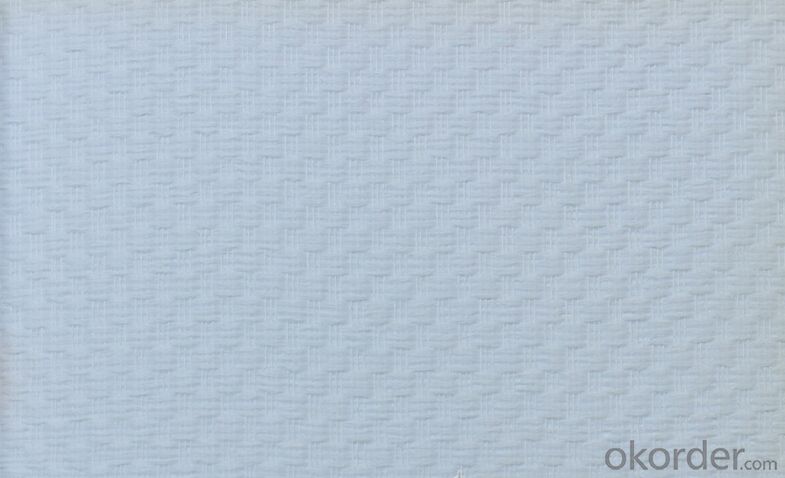
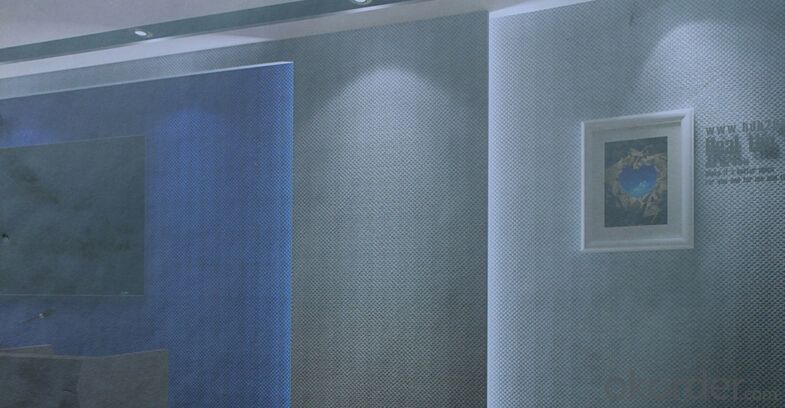
Application of Wallcovering Cloth
As a high-tech indoor decorating material,fiberglass wallcovering cloth is widely used in resident homes,
offices and shops and even cinemas,theatres,hotels and hospital faclilties,air ports,office buildings,shopping centers and schools.
Test Report
Our product has passed test by SGS as follows:
EN 12956:for determination of dimensions,straightness,spongeability and washability.
EN 12149:for determination of magration of heavy metals and certain other elements,of
vinyl monomer and of formaldehyde release.
EN 20105-B02:light solidity.
Our products had passed test of Fire Retardancy M1 Class by LINE
- Q: Can fiberglass wallcovering cloth be used in schools and educational facilities?
- Yes, fiberglass wallcovering cloth can be used in schools and educational facilities. It is a durable and fire-resistant material that can withstand heavy use and is easy to clean, making it suitable for high-traffic areas like schools. Additionally, fiberglass wallcovering cloth is available in various designs and patterns, providing a visually appealing and customizable option for educational spaces.
- Q: Can fiberglass wallcovering cloth be used in exterior cladding systems?
- Exterior cladding systems can indeed make use of fiberglass wallcovering cloth. Fiberglass is a highly durable and flexible material that is often employed in construction due to its resilience and ability to withstand the elements. When utilized as a wallcovering cloth, it can offer extra reinforcement and safeguard the exterior cladding system. Its lightweight nature facilitates easy installation, and it can be applied to various surfaces like wood, concrete, or metal. By preventing cracks, improving resistance to impact and moisture, and providing a sleek and uniform surface for paint or other finishes, fiberglass wallcovering cloth can augment the cladding system's durability and longevity. Nevertheless, it is crucial to select a fiberglass wallcovering cloth that is specifically designed for exterior use and is compatible with the chosen cladding system. Consulting with a professional or the manufacturer will aid in determining the most suitable type and application method for the particular project requirements.
- Q: Can fiberglass wallcovering cloth be used to cover existing wall damage?
- Yes, fiberglass wallcovering cloth can be used to cover existing wall damage. It is a durable material that can help reinforce and cover up imperfections on walls, providing a smooth and even surface for painting or further wall treatments.
- Q: What are the installation requirements for fiberglass wallcovering cloth?
- The installation requirements for fiberglass wallcovering cloth typically involve a few key steps. First, the surface where the cloth will be applied should be clean, smooth, and free of any loose debris or contaminants. This may involve removing any old wallpaper, patching any cracks or holes, and sanding down any rough spots. Next, it is important to properly measure and cut the fiberglass cloth to fit the desired area. It is recommended to leave a small overlap at the edges to ensure a seamless finish. The cloth can be cut using a sharp utility knife or scissors. Once the cloth is cut, it should be soaked in warm water for a few minutes to activate the adhesive backing. The cloth should then be applied to the wall, starting from the top and working downwards. It is important to smooth out any air bubbles or wrinkles as you go, using a smoothing tool or a clean, damp cloth. It is also important to ensure that the cloth is properly aligned and straight, especially if using multiple pieces. Any excess cloth at the edges can be trimmed off once the installation is complete. After the cloth is applied, it is recommended to let it dry completely before applying any paint or other finishes. This typically takes around 24 hours, but can vary depending on factors such as temperature and humidity. Overall, the installation of fiberglass wallcovering cloth requires careful preparation of the surface, precise cutting and application of the cloth, and proper drying time. Following these installation requirements will help ensure a successful and durable finish.
- Q: Does fiberglass wallcovering cloth provide insulation?
- Fiberglass wallcovering cloth offers a certain degree of insulation. This cloth is crafted from delicate glass fibers, which possess excellent insulating properties. These fibers trap air pockets, establishing a thermal barrier between the wall and the room. This insulation aids in reducing heat transfer and can enhance energy efficiency by lessening the need for heating or cooling. Nevertheless, it is crucial to acknowledge that the insulation level provided by fiberglass wallcovering cloth is comparatively minimal when compared to alternative materials like foam or cellulose. It is more commonly utilized as an ornamental wall covering that also provides some insulation advantages. Moreover, the effectiveness of the insulation provided by fiberglass wallcovering cloth can be influenced by various factors such as the cloth's thickness, the installation technique, and the overall condition of the wall. Therefore, while it can contribute to insulation, it cannot replace proper insulation materials and techniques in achieving optimal energy efficiency in a building.
- Q: Is fiberglass wallcovering cloth suitable for use in concert halls or auditoriums?
- Yes, fiberglass wallcovering cloth is suitable for use in concert halls or auditoriums. It offers excellent acoustic properties, such as sound absorption and diffusion, which are crucial in these spaces to enhance the overall sound quality and prevent echoing. Additionally, fiberglass wallcovering cloth is durable, fire-resistant, and easy to clean, making it an ideal choice for high-traffic areas like concert halls and auditoriums.
- Q: Does fiberglass wallcovering cloth have any specific installation requirements for seismic or earthquake-prone areas?
- Yes, fiberglass wallcovering cloth does have specific installation requirements for seismic or earthquake-prone areas. In these areas, it is crucial to ensure that the wallcovering is securely attached to the wall to withstand any potential seismic activity. Here are some specific installation requirements for seismic areas: 1. Substrate Preparation: Prior to installing fiberglass wallcovering cloth, it is essential to prepare the substrate adequately. The wall surface should be clean, dry, and free from any loose debris. Repair any cracks or damages to the wall surface to provide a stable base for the wallcovering. 2. Adhesive Selection: Choosing the right adhesive is crucial in earthquake-prone areas. It is recommended to use a high-strength adhesive that is specifically designed for seismic applications. Such adhesives have enhanced bond strength and flexibility to withstand the movements caused by seismic activity. 3. Adhesive Application: Apply the adhesive evenly to both the wall surface and the back of the fiberglass wallcovering cloth. Ensure that the adhesive is spread uniformly to create a strong bond between the wall and the wallcovering. Follow the manufacturer's instructions regarding the drying time and open time of the adhesive. 4. Installation Technique: When installing the fiberglass wallcovering cloth, it is important to ensure proper alignment and smooth application. Avoid trapping air bubbles or wrinkles between the wall and the wallcovering, as these can compromise its integrity during seismic activity. Use a smoothing tool to remove any air bubbles and ensure a tight bond. 5. Seam Treatment: Pay special attention to seams in the fiberglass wallcovering cloth. Overlapping or butt joints should be properly treated to prevent peeling or separation during seismic events. Apply an additional layer of adhesive or use a seam treatment product recommended by the manufacturer to reinforce the seam's strength. 6. Regular Inspections: After installation, regularly inspect the fiberglass wallcovering cloth for any signs of damage, peeling, or separation. Any issues should be promptly addressed to maintain the wallcovering's effectiveness in seismic areas. It is recommended to consult with a professional installer or follow the manufacturer's guidelines for specific installation requirements in seismic or earthquake-prone areas. Adhering to these requirements will help ensure the durability and effectiveness of fiberglass wallcovering cloth in such environments.
- Q: Can fiberglass wallcovering cloth be removed without damaging the walls?
- Yes, fiberglass wallcovering cloth can typically be removed without damaging the walls if done carefully and with the right tools and techniques. Here are some steps to follow for safe removal: 1. Start by preparing the area: Clear the room of any furniture or obstacles that may be in the way. Lay down drop cloths or plastic sheeting to protect the floor and any remaining surfaces. 2. Wet the surface: Use a sponge or sprayer to thoroughly wet the fiberglass cloth. This will help loosen the adhesive and make it easier to remove. 3. Score the surface: Use a scoring tool or utility knife to create small punctures or cuts in the fiberglass cloth. This will allow the water to penetrate and further loosen the adhesive. 4. Peel off the cloth: Starting from a corner or edge, gently peel off the fiberglass cloth. Use a putty knife or scraper to help lift it away from the wall if necessary. Take your time and be careful not to apply too much force, as this may damage the underlying wall. 5. Remove any remaining adhesive: Once the cloth is removed, there may be some adhesive residue left on the walls. Use a wallpaper removal solution or a mixture of warm water and vinegar to soften the adhesive. Gently scrape it off with a putty knife or use a sponge to wipe it away. 6. Clean and repair the walls: After all the cloth and adhesive are removed, clean the walls with a mild detergent and water to remove any remaining residue. Inspect the walls for any damage or imperfections and repair as needed before applying a new wallcovering or paint. It is important to note that the ease of removal may vary depending on the specific type and quality of the fiberglass wallcovering cloth, as well as the condition of the underlying wall surface. If you are unsure or concerned about potential damage, it may be best to consult a professional for assistance.
- Q: Can fiberglass wallcovering cloth be used in conjunction with custom artwork or murals?
- Yes, fiberglass wallcovering cloth can be used in conjunction with custom artwork or murals. The cloth provides a strong and durable surface that can support and enhance the artwork or murals, ensuring longevity and protection. Additionally, the smooth texture of fiberglass cloth allows for a seamless and professional application of the artwork or murals onto the wall surface.
- Q: Can fiberglass wallcovering cloth be used in outdoor applications?
- Fiberglass wallcovering cloth can be used in outdoor applications, but it is important to consider a few factors before doing so. Fiberglass is known for its durability and resistance to weather conditions, making it suitable for outdoor use. However, it is essential to choose a fiberglass cloth specifically designed for outdoor applications, as some may not be suitable for prolonged exposure to sunlight, moisture, or extreme temperatures. When selecting fiberglass wallcovering cloth for outdoor use, it is recommended to look for products that are UV resistant and have a waterproof or weather-resistant coating. This will ensure that the cloth can withstand the elements and maintain its integrity over time. Additionally, it is crucial to properly install the fiberglass wallcovering cloth in outdoor applications. Ensure that the surface is clean, dry, and free of any debris before applying the cloth. Proper adhesives or fasteners should be used to secure the cloth to the surface, ensuring a strong and long-lasting bond. It is also worth noting that fiberglass wallcovering cloth may require periodic maintenance in outdoor applications. Cleaning the cloth regularly and inspecting it for any signs of damage or wear is essential to maintain its effectiveness and prolong its lifespan. Overall, fiberglass wallcovering cloth can be used in outdoor applications, but it is important to choose the right product and follow proper installation and maintenance procedures to ensure its durability and longevity.
Send your message to us
Fiberglass Wallcovering Cloth with 81704 Air Permeability
- Loading Port:
- Shanghai
- Payment Terms:
- TT OR LC
- Min Order Qty:
- 100 m²
- Supply Capability:
- 100000 m²/month
OKorder Service Pledge
OKorder Financial Service
Similar products
Hot products
Hot Searches
